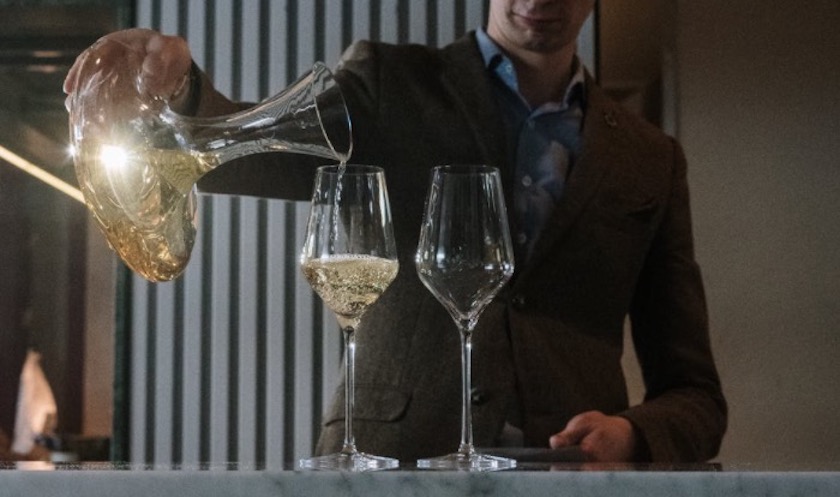Rédigé le 03/01/2022
Choisir la bonne carafe pour la bonne utilisation

Lorsque l'on sert un vin à table il n'est pas rare de voir une carafe. En plus d'être jolie, elle a une véritable fonctionnalité. Cette dernière est soit en verre, soit en cristal.
Le plus souvent, elle sert à aérer le vin, c'est-à-dire d'avoir une surface d'échange plus importante entre l'air et le vin que dans une simple bouteille ouverte, ce qui lui permet de s'épanouir parfaitement. La carafe peut permettre aussi au vin de se décanter, à savoir, se débarrasser des dépôts qu'il aurait pu accumuler.
Selon le but recherché, le choix de carafe ne sera évidemment pas le même. Pour aérer un vin jeune, il faudra privilégier une carafe à l'assise large et au goulot évasé. Cela permettra d'apporter assez d'oxygène sur une surface large pour bien aérer le vin. Il faudra procéder à l'opération environ 2 heures avant. Si cela est fait trop tôt, le vin peut être trop aéré et ainsi, perdre en arômes. La carafe ne devra pas être bouchonnée.
Lorsque l'on souhaite décanter un vin vieux, la démarche ne sera pas la même. Au contraire, il faudra apporter le moins d'oxygène possible pour que les dépôts se séparent du vin mais que le goût ne soit pas altéré. On choisira donc une carafe étroite et le vin devra y être servi le plus tard possible. Et pour cause, le vin vieux peu s'éteindre en quelques minutes une fois au contact de l'air ambiant.
Pour verser le vin dans la carafe, servez-vous de la technique de la bougie. Grâce à cette lumière douce, vous pourrez voir rapidement les premières particules en suspension et donc, arrêter l'opération. Ici, il faudra reboucher la carafe pour éviter qu'il n'y ait trop d'oxygène.
Peu de gens le savent, mais il n'y a pas que les vins rouges qui se carafent, les vins blancs également. Certains nécessitent autant d'aération que les vins rouges. Il sera important de carafer un vin blanc s'il est jeune. Il peut malgré tout s'avérer compliquer de garder le vin blanc à température. Si votre carafe rentre dans votre seau à glaçons, vous avez tout gagné, sinon il existe des carafes à vin blanc avec une tige réfrigérante ou pouvant recevoir des glaçons. Mais ce n'est pas tout ! Les champagnes peuvent également se carafer, mais avec parcimonie pour ne pas perdre les bulles.
Voilà, vous avez toutes les clefs en main pour choisir la carafe la plus adaptée à votre vin et à son utilisation. Il y a également quelques critères "pratiques" que vous pouvez prendre en compte comme la taille, la matière (le cristal sera évidemment plus fragile que le verre), ou encore l'esthétique (plus elle sera biscornue, plus elle sera difficile à laver).

